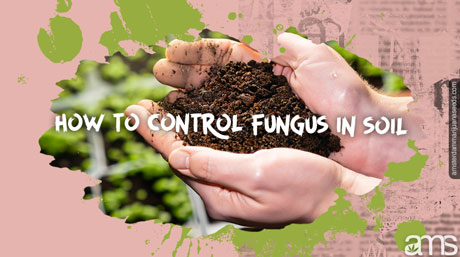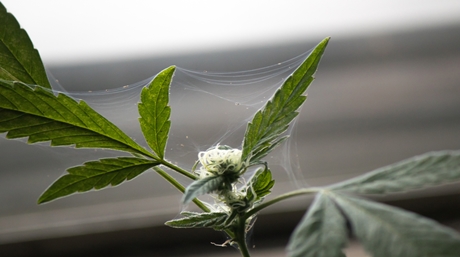Controlling mold in your cannabis cultivation space?
As a passionate cultivator of marijuana and an expert in the field, I’m eager to share my wealth of knowledge about one of the most critical aspects of weed growing – preventing and controlling fungus and mold.
What are the most effective techniques to prevent fungus?
Whether you’re about to buy cannabis seeds for the first time or you’re an experienced grower, I guarantee this comprehensive guide will arm you with valuable insights to maintain your garden’s health and vitality. So, let’s dive in and learn the tricks of the trade to keep those annoying fungal infections at bay.
Part 1: The Basics – Identifying Fungal Threats
Before you can start preventing mold and fungus, it’s important to understand what you’re dealing with. When you buy weed seeds, you’re purchasing a promise of future growth. But like all living things, your plants are vulnerable to a range of fungal infections, including root fungus, black spot fungus, leaf fungus, and the dreaded powdery mildew fungus. Each of these pathogens can have detrimental effects on marijuana growth, and overall plant health.
For instance, root fungus can lead to root rot, while black spot fungus creates small, dark spots on your cannabis leaves. Similarly, leaf fungus is characterized by browning and dying leaves, while powdery mildew fungus, appears as a white, powdery substance on your plant’s leaves, stems, and buds.

Part 2: Preventing Fungus
An Ounce of Prevention Is Worth a Pound of Cure. Prevention is always the first line of defense. The key to preventing fungus in your growing process is maintaining optimal conditions and practicing good hygiene.
Firstly, always buy cannabis seeds from reliable sources to ensure they are disease-free. When sowing your marijuana seeds, it’s critical to use sterilized soil and pots. Remember to maintain a suitable pH level in the soil, between 6.0 and 7.0, as this can help prevent root fungus. Proper aeration and drainage are also vital in avoiding waterlogging, a condition that encourages fungal growth.
Regulating your growing environment’s temperature and humidity is another crucial factor in preventing mold. High humidity coupled with warm temperatures can provide the perfect environment for mold and fungus to thrive. Keep your humidity levels below 50% during the flowering stage to prevent issues like leaf fungus and black spot fungus.
Also, be mindful of overcrowding your plants as this can restrict airflow and create a damp environment conducive to fungal growth. Finally, the use of anti-fungal sprays can aid in fungus prevention, making your cannabis growing experience a fruitful one.

Part 3: Control Fungus in Soil and Cultivation Space
A crucial aspect of preventing fungus lies in the question, ‘How to control fungus in soil?’. This is where a good compost tea can come into play, by boosting beneficial bacteria in the soil that help keep fungal spores at bay.
Likewise, for controlling mold, regular inspections are vital. Examine your plants frequently for signs of mold at the early stages of growth. If you detect mold, prune the affected areas immediately to prevent further spread. Proper ventilation is also key in mold control. Fans, filters, and exhaust systems can help to keep air circulating and prevent moisture buildup.
Remember, fungus and mold thrive in damp, poorly lit areas. Therefore, ensure that your growing space is well-lit and adequately ventilated to maintain a healthy environment for your cannabis plants.

Part 4: Treatments for Fungal Infections
Despite your best efforts, you might still encounter a fungal issue. Dealing with the Unavoidable, don’t fret! There are several methods for treating and controlling mold and fungus. Fungicides can be helpful to combat these pests. Neem oil is a natural, safe choice that can effectively tackle powdery mildew and fungus. Similarly, a baking soda and water mixture can be used as a homemade fungicide to treat black spot fungus and leaf fungus on cannabis.
For a more serious infection like root fungus, you might need to resort to systemic fungicides or even consider repotting your plants in fresh, sterilized soil.
Regardless of the method you choose, remember to act quickly and decisively. Timely intervention is key in how to prevent a fungal infection from spreading and causing more damage.
To sum up, cannabis cultivation, whether from marijuana seeds or cuttings, is a rewarding endeavor that requires attention to detail, passion, and a fair share of knowledge on preventing fungus and mold. By keeping these pointers in mind, you can navigate the most common fungal threats, ensuring your cannabis growing endeavor, remains as healthy and productive as possible.
Through learning how to control fungus in soil practicing rigorous mold control, and always keeping an eye out for potential issues, you’re set on the path of successful cultivation. Now, whether you’re about to buy weed seeds or are already waist-deep in the throes of growing, you’re equipped to prevent, control, and treat any potential fungal hazards, making your journey in growing marijuana as smooth as possible.
FREQUENTLY ASKED QUESTIONS:
1. What are the common fungal threats in cannabis growing?
Common fungal threats include root fungus, black spot fungus, leaf fungus, and powdery mildew. Each can cause serious damage to your plants, so early identification and prevention are key.
2. How can I prevent mold and fungus in my weed garden?
Maintain optimal growing conditions by keeping humidity levels below 50%, ensuring good ventilation, and avoiding overcrowding. Use sterilized soil and pots, and always buy seeds from reliable sources.
3. What should I do if I detect fungus or mold on my cannabis plants?
Act quickly by pruning affected areas and applying natural fungicides like neem oil or a baking soda mixture. For severe root infections, consider using systemic fungicides or repotting in fresh, sterilized soil.















